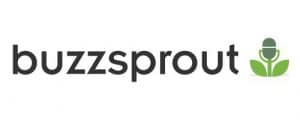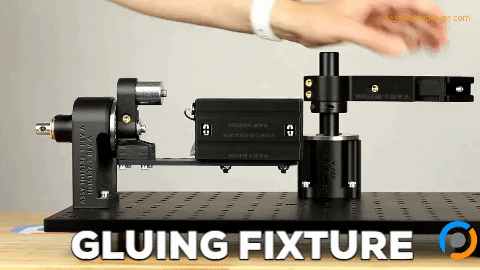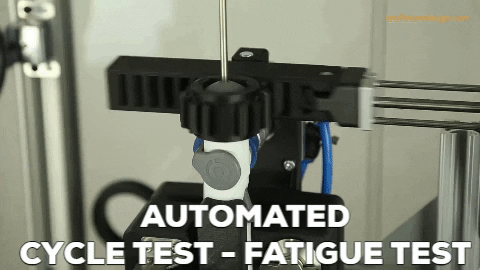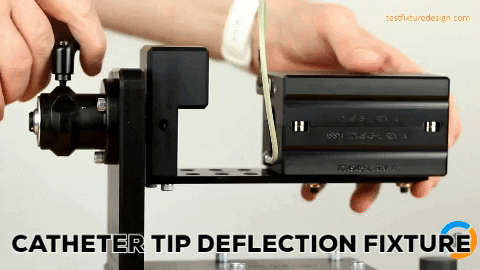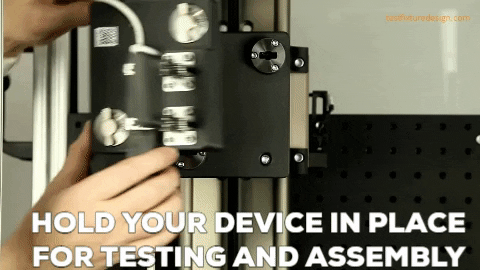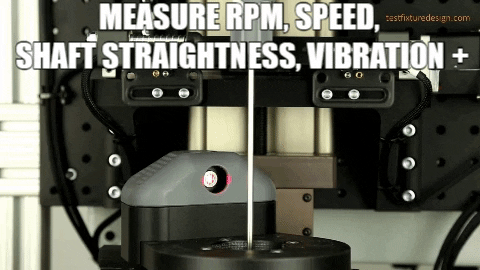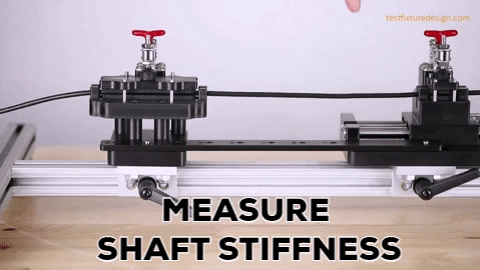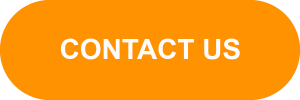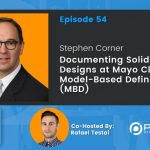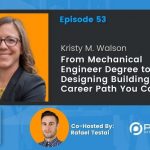Greg Trees FEA, EHD, and Other Useful Engineering Acronyms
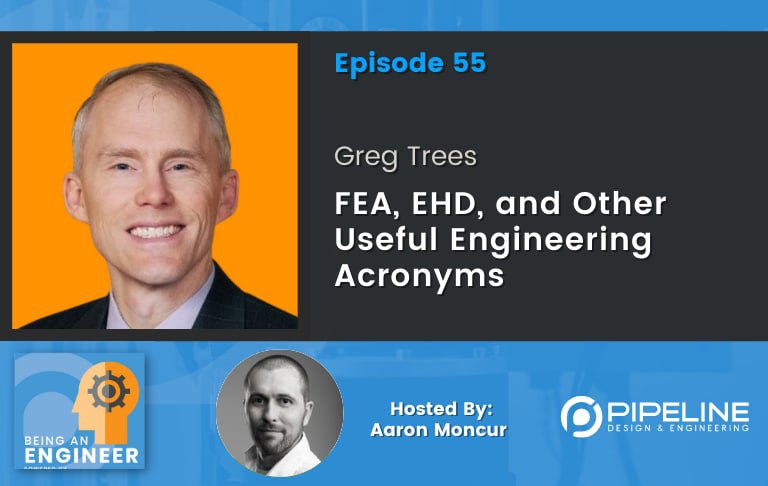
“Just keep working. The problem is what I found is when you have a dedicated high performing team, with, I’ll say the right people on the bus, in the right seats of the bus, you can bring home very challenging problems. – Greg Trees”
Who is Greg Trees?
Greg Trees has a degree in mechanical engineering and has spent nearly 30 years as a mechanical design engineer developing products from railroad instrumentation to drug delivery devices to diagnostic equipment. Greg also has specific expertise in the world of FEA (Finite Element Analysis) and EHD (electrohydrodynamics).
EXPAND TO VIEW EPISODE TRANSCRIPTION
SUMMARY KEYWORDS
fta, boundary conditions, people, engineer, stresses, load, analysis, speak, material, years, work, develop, part, model, learning, design, talked, tools, interesting, fba
SPEAKERS
Presenter, Greg Trees, Aaron Moncur
Presenter 00:00
The being an engineer podcast is a repository for industry knowledge and a tool through which engineers learn about and connect with relevant companies, technologies, people, resources and opportunities. Enjoy the show.
Greg Trees 00:16
Just keep working. The problem is what I found is when you have a dedicated high performing team, with I’ll say the right people on the bus, and the right seats on the bus, you can bring home very challenging problems.
Aaron Moncur 00:44
Hello, and welcome to another episode of The being an engineer podcast. Our guest today is Greg Trees. Greg has a degree in mechanical engineering and has spent nearly 30 years as a mechanical design engineer developing products from railroad instrumentation to drug delivery devices to diagnostic equipment. Craig also has specific expertise in the world of F E A, or finite element analysis, which we’ll definitely dive into during this interview. Greg, thank you so much for joining us today.
Greg Trees 01:15
Thank you very glad to be here.
Aaron Moncur 01:17
So what made you decide to become an engineer?
Greg Trees 01:21
That’s a great question. And so many times over for my career. So back when I was I’ll say, My earliest Christmases, I can recall maybe six years old or so my dad was fairly handy. And he used to give me tools for Christmas farmer getting a hammer saw drill, jigsaw and those kind of things. So pretty young my life I started I’ll say, taking things apart, you know, fixing my bicycle, or my friend’s bicycles Neves and help getting fixed the flat tire and helping with those kind of things, or at least pal. So it was just kind of the start, then over time, as progressives are going to school and mathematics, certain money, liking math, Krishna circling people saying, hey, you know, you should be an engineer, you’re really good at math and science. So then on top of that, my grandfather, who was one of my role models I looked up to his background was Westpoint, analytical engineering, insurance. So I had a lot of respect for him. And he was an engineer. And of course, I didn’t really have an electrical, I’ll say, flair for things, but mechanical signage to me. So my Knossos, the discipline of mechanical engineering, it just kind of sounded like a good fit, although I had no real idea what it does for living other cars. So that kind of really kind of just my progression towards moving that direction for as a college major.
Aaron Moncur 02:40
That’s so cool that your dad gave you tools for Christmas. And that makes me think that I should be given tools to my kids. It’s coming up here pretty soon. And one in particular, I think, would love his own set of tools. What a wonderful idea. Do you think that your father gifted these tools to you? Because that was kind of the direction he wanted to steer you? Or was it more you’d already kind of shown like this mechanical aptitude and he thought, oh, tools, that’d be a perfect way to help them along? Yeah,
Greg Trees 03:13
I’m not sure if it was intentional. He just wanted to see his son use these things. And we talked about the good for me to follow up and ask him, Why did you give me
Aaron Moncur 03:24
a young boy? free labor? Right, exactly. As soon as he gets trained? All right. Well, let’s talk about FTA. A little bit, it’s not something that we have spent much time talking about hear on the podcast and maybe share really briefly what is FTA? What what does that acronym mean, you know, finite element analysis, what does that even mean? And then a brief summary of how it’s used, generally speaking, in a product development environment.
Greg Trees 03:53
Sure. So FPGA stands for finite element analysis. And basically, that’s where you take a an object and you break it up into small bits or chunks called elements. And from there you can assign a material properties to it, which are properties of stainless steel or plastic or rubber. And you can put forces on loads you can vet it, you could twist it, you can then have even more complex analyses, where you have a full assembly such as even automobile, automobiles are virtually crash tested into computer models so that you have finite element analysis is basically building a computer model to simulate your object with its intended requirements and to try and determine the his performance whether meet those comprise a computer versus building an empirical, solid, physical thing.
Aaron Moncur 04:42
I did not know that entire automobiles were tested an FTA. That’s really impressive, in part because I’ve done a little bit of FTA I’m nowhere near an expert at all, but I’ve done a little bit and whenever I run an FTA I was trying to strip out as much Many parts as I can because I, you know, I’m running it on a computer not not a supercomputer, or, you know, a cloud bank or something like that. And it’s really processor intensive. What what does that system look like that runs an entire automobile is this like, you know, Amazon cloud services are something
Greg Trees 05:19
we actually have access, where I work to Amazon cloud services. And we also have our own high performance compute cluster, which is actually faster than the cloud. But the cloud has also a more also expandable hardware, so that you can use to solve a larger analysis, which is maybe more than what you have available, let’s say I think our current iPhones costs, we have a workers, Mayor 256 cores, so to speak, you know, of course, one CPU could happen before a course. So this allows you to scale up and solve large problems. You know, it’s amazing that automobiles, you said are also crash dummies in there virtually and airbags deploying herself there. Now, I’m not in the automotive business, I’m in the medical device business. So we’re simulating devices and our materials to failure. We’ll be doing I’ll say electric, electro structural, thermal coupled analyses, as other types of analyses where you’re structuring our coupling fluids and structures together. And so it’s really amazing just the the fidelity of these models and the physics you can coupled together to have a real life simulation. And then the hardware we have today available to associate in this age. It’s just, it’s just amazing. What we can say no, just because the physical hardware exists in the software.
Aaron Moncur 06:34
That’s incredible. I had a boss, I don’t know, 1520 years ago, who, and I’m sure FDA has come a long way since then. And it’s also entirely possible that he was just ignorant to what FDA could do at that point. But I remember him saying, when when someone brought up, oh, let’s do some analysis on this, let’s throw it an FTA and see what we get. He would say, well, we’re just gonna have to test it. And you know, the real world anyway. So let’s forget about the FAA and just go straight to real world testing. What what response or feedback might you give to someone with that mindset?
Greg Trees 07:10
Well, real world testing is, of course, always what I’ll say some of the ultimate. But one of things we try and encourage engineers to do in their development of the design is to develop a good mathematical model. And it could be something you felt the equation in Excel or Mathcad, or some other numerical analysis tool, or I will say, an FBA program analysis, and then you have your empirical tests, what you want to do is you want to compare your empirical results to say from physically they’ll test to your analysis, if this is something important that you’re also not just a cantilever beam equation, like California’s gonna deflect, so to speak. But that’s like a really important requirement. Yeah, both your empirical results and your analysis model. And if the analysis and the model for grief or when I’ll say some reasonable margin of error, what that tells you is you’ve minimized the risk of not understanding your design now, and adorably, you also you can have disagreement, you can have an analysis, which you say, oh, man, the brake force should be 100 pounds, but in real life at 150 pounds? Well, that’s a that’s a pretty large percentage difference. And so what you don’t know, just because there’s a difference, a lot of times people gravitate Well, the empirical my physical test must be correct. Well, in truth, you don’t know because oftentimes, many types of tests can actually improperly set up and the results can be poor. So you might actually find that, right compared to your analysis of well, you check your boundary conditions of your physical test, find out if it’s close, or no, it’s making material properties or the boundary conditions, my FBA model were inaccurate. So the, the idea is to try and to have both, so that you can get confidence that you haven’t missed something big.
Aaron Moncur 08:57
That’s a really interesting way to think about it. I always thought of FDA as kind of like a first pass, maybe try that just to make sure you’re in the ballpark, and then you do physical testing, I hadn’t thought about it from the standpoint of the FDA could actually be a check against the the physical testing to tell you maybe your physical testing isn’t right. That’s a really interesting point. Can you talk a little bit about the differences between linear and non linear FPGA and when to use each?
Greg Trees 09:26
Oh, well, so a lot of simple models are in the linear region of analysis. So let’s say you’re doing any of the cantilever beam, and you put a load on the end of the beam, and on the other side of the beam is fixed. If you put the load on the end of the beam, and deflects let’s say, a 10th of an inch was applied, you remove the load and load that comes all the way back. That’s an example where you did not take the material beyond let’s say a linear condition. So for metals, let’s say the linear elastic point would be the yield point. So or a stainless steel, it might yield, say, if it’s not very well heat treated maybe 36,000 psi. Beyond that, you might need a nonlinear material model to capture, I’ll say, the material beyond I’ll say, the point of yield, which is also in the plasticity region of material. And those are more complex material models, which we do all the time. But you need to recognize the anytime your stresses in your model are beyond also the yield point, your if your material properties are only in the linear region, you’re no longer necessarily predicting things accurately, you might have a small margin of error might have a large margin of error. Now, that’s simply non linearity in the area of material properties. You can also have contact between components. So if you have ball bearings, you’re rolling on a race, so to speak, contact is highly nonlinear with regard to sign that model to solve and getting good convergence. So you can have material non linearity, you can have really cheap metric non linearity. And I’m trying to fix listed here, I think there’s other sorts of nonlinearities, where there’s just a couple of common examples.
Aaron Moncur 11:09
So if you’re doing an analysis on a metal material, it’s pretty clear where that linear range is, if you look at like a force versus displacement curve or stress strain curve, if you’re looking at a plastic material, that that linear range is a little bit less clearly defined. Our plastics, another area where nonlinear analyses are performed,
Greg Trees 11:33
Oh, yes. And plastics can be highly nonlinear. I mean, kind of by definition, when we say the straightforward of that, Young’s modulus, so to speak, we talked about, it’s somewhat straight, anaplastic, but very quickly, or fairly early on, it starts to get curvature to it so often, in a plastic if you’re doing an elastic plastic model, which is what we call a bind. And your material model is basically using two lines to try and simulate that material that’s relatively simplistic, oftentimes good enough to capture a certain amount of false a fidelity in the model. If you need more accuracy, having also a damaged model, where if your plastic strain goes beyond a certain level, certainly those models become more sophisticated to capture higher levels of strain. And to properly capture, I’ll say, your hysteresis loop, where if you pull the material so far, it comes back a certain way when the loads released. So plastics are can have very sophisticated, I’ll say, properties from interacting with our office.
Aaron Moncur 12:35
How much experience or materials science knowledge, or just material properties knowledge, does one need to have to run FTA? Effectively? Is this something that if you’re really focused on it, you could pick up and, you know, a few months? Or is it really years before, you’re really very competent with it?
Greg Trees 12:56
Let’s say what’s really cool about the time we live in is a lot of the most simplistic analysis, people start out with our single component analysis. And they’re just trying to understand, you know, is my wall thickness thick enough? Is that is the part just gonna be strong enough? Am I beyond yield? They’re trying to ask basic questions for the basic answer. So the I’ll say some neutral cracking you FDA packages have default materials already kind of loaded. But there’s simplistic material models, often just linear material models, and they don’t capture I’ll say, nonlinear behavior, such as plasticity. So if you’re doing that cantilever beam, and you find in you load it up, oh, my stresses are below the yield point, hey, this model is great. It’s perfect. I can make my decisions I move on. If you start to see that your stresses are much beyond I’ll say that the yield point like well, I might even invest in a nonlinear industrial model. But with regard to picking it up, I’d say even the cap tools we have today, which have been FDA like pro engineer SolidWorks, I think almost have some sort of vetted Fe at this point, the, the tools are very simple to use. And I think people can make reasonable I’ll say that much. I’ll say, guidance, make reasonable material, I’ll say boundary conditions and settings, which allow them make good decisions. But in general, though, winning with I’ll say, learning I’ll set to like this, there’s an old phrase right and ensuring garbage in equals garbage out. If you have a poor boundary conditions are the most notorious way to have had the results if you artificially constrained something, which is called a prejudicing. And if you put too large of an error, you say this is just fixed, it’s not movable, what you’ve just done is you’ve made it infinitely rigid. And so when you put your load on it, you’re fine your stresses are very low, but that was an artifact of your boundary conditions. So it’s always good when learning a new tool like this to have I’ll say someone who’s more senior and look over your results to kind of give you some tutoring as for saying you know this boundary condition primacy adjusted to be more realistic so that you’re not having non conservative results. Often we talk about having results which are more on the conservative side, like over predicting stress versus under predicting them. Since
Aaron Moncur 15:00
that does make sense, can you think of an example that you can share where you and your team used FTA as part of the product development process, and you know, it was really helpful it you look back and think to yourself, Oh, thank goodness, we did that, you know, it saved a lot of time or a lot of money, anything like that.
Greg Trees 15:19
There’s, I’d say, for us, that’s all the time FTA is kind of a necessity term trying to avoid I’ll say, do lose, especially in the medical device world, we’re often if you’re putting devices down to five millimeter, you know, trocar eject very small parts, with very high loads, you’re usually stressing the price really high. So we’re really trying to, we’re really pushing the materials kind of to their maximum speed. So oftentimes, we’ll have to do things such as this if we have five components in an assembly. And if I have a imagine, if you will, a pair of pliers, you know, our apparel hires eventually kind of come down to roughly a parallel gap towards the end of your squeezing something. Now imagine if you want that gap to be the width of one human hair, and it’s a one inch long gap? Well, if you have four components, which make up your pliers, and you’re trying to achieve that uniform gap that say, between two and four thousandths of an inch across that, that range, what we had to do in order to I’ll say design that is doing what we call a virtual design of experiments, where we’ll do several, I’ll say test cases, let’s say 16, unique F FTA models, where we will have the device in various configurations and the components of various sizes and dimensions to try and understand what particular attributes to the design are driving the effective to get a uniform Draaga. And from that, I’ll say analysis, we can develop a transfer function and eventually help us I’ll say, final as the design effort tolerances on the key dimensions, which control the final outfit design and manufacturing process.
Aaron Moncur 17:02
Interesting. Yeah. Are there times where we shouldn’t be using FTA? You know, use cases in which it’s just not appropriate to use FTA.
Greg Trees 17:13
So as a pragmatist, you know, I try and do whatever makes the most sense for a given case. In other words, you try not to do throw FTA everything per se, there’s oftentimes people use FTA, for something where the physics just really hasn’t been developed yet. That technology is not there yet. You’re trying to think of just a sample here from
Aaron Moncur 17:35
RF, maybe
Greg Trees 17:36
I yeah, let’s say let’s say the physics environment, Volvo just sealing a vessel within a medical device, there’s, there’s a lot of physics going on, you have electricity flow, you have joule heating, you have mechanical venting, you have the phase change going on with the vessel as it’s sealed to the heating process. That is, obviously to do all that numerically, which would be wonderful as a great aspirational goal. I don’t know of any healthcare company, which has also cracked that just yet. So sometimes you’re left with doing things empirically. Because there’s the technology is not there, you can find you can do pieces of it parts of it numerically, but not the whole thing. Similarly, sometimes it’s just if you have a bunch of parts sitting over on the bench, and you have a load frame where you can just go walk over and pull test them, versus also developing a real sophisticated Fe model, which might take you you know, if it’s really sophisticated, you have seven days to develop and a couple days to run, it might be quicker to test. So you can’t do whatever, whatever gives you the reasonable information, the quickest, so that you could trust and make your decision. Yeah,
Aaron Moncur 18:43
great advice. How about for? For those of us who are just getting started with FBA, we’re you know, we’re very junior. We’re still learning what the tool is and how to use it, or are there any areas that you can recommend we really watch out for, you know, what are the gotchas that can really get you into trouble if if you’re if you don’t even know enough to be aware to watch out for those areas?
Greg Trees 19:11
Well enough, the two biggest ones are your boundary conditions and the loads and how you apply them. So one of the first mistakes people make is they’ll, if they if you have a post, let’s say grab a part of flowerpots sitting on top of the table top desk, and the flowerpot has, it’s full of dirt, so to speak on the inside or thought was maybe full of water makes a little easier because water applies a pressure on the inside of the flowerpot. Of course that firefight is sitting being supported by the table and someone might initially say you know what to do with the bomb that firefight I’m going to fix that if that rigid boundary condition and one is just done is by fixing it make it in movable. He also made it infinitely rigid. So zero stress can develop any don’t notice any elements that are linked to that boundary condition. So now there The stresses will be artificially low and may lead you to conclude that your design is strong enough, but it’s really not. The next thing would be how you apply your loads and low. Sometimes might people might be tempted to do a point load, like all the force. And Pickler like a single dot node was what we call that verse or mate put on a line edge. And what those kind of inputs will do is to artificially drive the stresses up too high, who’s thinking we can conclude that, you know, there might be an issue with design, really, it’s just how the gloves are applied. And it was concentrated stresses just make your dresses look high or higher than what they really are in reality. So just be careful with your boundary conditions and how you hire
Aaron Moncur 20:44
this, this really gets down into the weeds. And I don’t know how effectively we’ll be able to discuss it just using verbal communication or oral. But let’s say that you have a device a medical device a handle, and you want to understand how hard can a person squeeze on this handle before it breaks or exceeds the yield point plastically deforms. An easy way to apply a load to a handle like that would just be to isolate a defined surface, maybe it’s kind of like a oval shaped surface on the face of this handle and apply your load across that surface. So you have a load applied, distributed even evenly across this oval, you can see the oval represents the person’s thumb or something like that. But But even when you do that, the load is at its at its its fully distributed maximum value up to the edge of where you have defined that oval to stop. And then, you know, a 1,000th of an inch beyond the surface defined by that oval, there’s no load, which is not really how things work, right? If someone’s thumb is pressed up against a material, there’s going to be a gradual reduction of of load. As you move away from the surface under that thumb, is there a way to accommodate for things like that? Or is that just a limitation right now with FDA,
Greg Trees 22:11
there certainly is a way I mean, if one was really concerned about the stresses directly beneath the finger and the squishiness of our flesh, so to speak, certainly you could develop an assembly model, we had contact and you have all say, an appropriate squishy material representing the flesh or muscle of one’s finger, gosh, hang on that that could be done that level of fidelity. We do those types of exact scenarios you describe all the time with regard to concern about I’ll say the physical force of someone because they’re on the handle and breaking it. And oftentimes, the peak stresses are not right below where someone’s applying the load, the peaks, stresses are often depending right, so venting is usually a distance away from where the load is actually applied. So it’s often not very crucial to I’ll say, model on that fidelity, right anything where the loads applied, such as making sure that you got the right force at the right location. Getting right at the right moment, I’ll say the pending stresses for somewhere else in the park, which is usually the concern. So if you would have it I’ll say a point load or line load, or having contact to a rigid cylinder just at the right distance, you would get good results in the area of care.
Aaron Moncur 23:20
That makes a lot of sense. Great way of explaining it. All right. I’m going to take a very short break here and share with the listeners that Team pipeline.us is where you can learn more about how we help medical device and other product engineering or manufacturing teams develop turnkey equipment, custom fixtures and automated machines to characterize inspect, assemble, manufacture and perform verification testing on your devices. We’re speaking with Greg trees today, Greg, you worked at a company called Battelle, which we’ve actually had other people from Mattel on the show several times in the past, actually. Anyway, at Battelle, you developed AIP in the area of electro hydrodynamics, or EHD, can you share a little bit? This is not an area that I’m familiar with. So I’m guessing there are a lot of engineers out there who are not very familiar with this area. What is EHD? And can you share a brief example and application of how it’s used? Sure.
Greg Trees 24:18
So there’s a lot of different types of, I’ll say lesser heard of types of physics, and each D electro hydrodynamics is one of them. That’s basically if you have a I’ll say, a flat plate, or ground plate, your table that you’re sitting at right now is ground and if you held your pen, your ink pen above that table a couple of inches. If you had the pen I’ll say the voltage at 10,000 volts and your ground plate as a as a zero observables ground. If you have right fluid properties, the right voltage potential, you can get that fluid to analyze into an aerosol. So instead of your fluid encounter, I’ll say write it on the pen on paper so to speak. You can turn your pen, it’ll say a sprayer, so to speak, so that that fluid will form what’s called a Taylor cone. And that that take the tip of that little cone of fluids at very high electric field source. And that the height, the charge charge density, and the gradient overwhelms the surface tension of the fluid and causing it to burst into an aerosol. And that aerosol is charged as a very high amount of charge per unit volume on it. So then the particles rapidly repel from each other, so becomes one of the interesting properties of HD process Fitzy tuned properly, is just like a monodisperse aerosol, meaning the distribution of the particles coming from that process are very small, their size, so you’re targeting at the time for drug delivery in the lungs to have particles between maybe two and 10 microns, something of that nature. And this process can felt a very fine distribution of particles. But what’s also interesting at least electro hydrodynamics, initially that aerosols charged so all the particles are rapidly also repelling each other. And of course, if they get near a source like a your body or paper or metal plate, they want to plate it. Versus if to get lungs, you don’t need to discharge the particles. So we also had to combine that with a methodology to fire much of ionized air added all those little particles to neutralize their charge. So that could be I’ll say, inhaled into the lung and get get very good. I’ll say drug deposition. Now they’re things
Aaron Moncur 26:33
interesting that that makes me think I live here in Arizona, where it’s super hot. I wonder if there’s an application for that in misting systems might be maybe too expensive of a process for that, but sure, could get some small particles, I think the diameter of the water is is directly related to the cooling effect it has. That would be interesting. Yeah. Anyway,
Greg Trees 26:58
evaporates very quickly. So speaking, also, you cooled on the air? You don’t have to worry about getting it straight. Although you meeting sweating? That’s a cool thing.
Aaron Moncur 27:08
Yes, yes, absolutely. All right. Well, let’s see what, what is one of the most challenging product development projects that you’ve worked on in your career? And what were one or two key takeaways from that project? Well, I
Greg Trees 27:22
say developing vessel sealers is extremely challenging. Due right now, obviously, finding a method to deliver energy in a very precise manner, to understand the tissue properties, and all the variables of the device control those with an indictment for type framers, to get a very repeatable outcome across a variety of tissues is extremely challenging. So basically, whether it’s ethical makes us a bunch of vessels, sailors, so speaking, and cutting devices, to that is an extremely challenging technology. And one of the challenging things about it is, since you cannot I’ll say this presently, fully developed numerical modeling and computer models to help you do this, that means you’re doing a lot of empirical work. So that just puts an extra strain or diligence on the quality of that work issues thorough, just needs to snooze itself.
Aaron Moncur 28:25
Sure, yeah. I’m curious, what would what would the Greg have today, say to the Greg of 30 years ago, back when you were just starting out as an engineer that you wish you had known back then?
Greg Trees 28:38
I definitely got some sub points there. So I think for engineers starting out, I mean, focusing on your technical for the first time, five to 10 years of your career is a very wise thing to do, making sure you’re just growing a lot of areas as much as you can try not to get if you’re interested in being outside. And as you’re doing technical things, make sure you’re taking looking for opportunities to really just develop your technical. After that, I would say learning structured solving comm techniques. Oftentimes, when we come out of college we know areas of physics and mathematics and science. But you haven’t really taught some methodologies for solving problems such as Six Sigma methodologies such as to make and demand the learning about those methodologies can really help you solve problems more efficiently and correctly versus thinking you’ve solved it, but really, you happen to notice sometimes happen. The other thing I’ll say is learning the value of risk management tools and system ensuring tools as you select your concepts as well as you refine your designs. You I think designing teams or engineers in general to recognize that really a lot of their engineering careers are about managing risk and trying to avoid things from going wrong. So really, a large part of our lives is risk management, risk management, which managers have a source for You just don’t realize it. So you’re trying to keep something from failing for working. And the antithesis of that, is it not working. So you’re trying to constantly balance risk, so to speak. And lastly, I’d say, be a jack of all trades and a Master of one. Some people will say, No, jack of all trades, master of none. But I encourage people, you want to really go after something and go after it deeply. Because what’ll happen is that you become a master of something. They’ll eventually build a augment or bolt on other things to it. So for example, many years ago, I started going deep into FBA was then pulled me into knowledge of materials, which then fooled me into knowledge of crazing and other failure modes for material properties. And so it allows you to build out a platform if you go deep on something so massive, all trades checkable. Mess. You got it? Got it.
Aaron Moncur 30:56
You’ve you’ve mentored? I think, quite a few engineers in your time. And I was wondering, what are some of the topics that you commonly hit on? And it might be similar to some of the things he just shared about, you know, what does Greg today share with Greg 30 years ago, but in your mentoring sessions? What are some some topics that come up commonly?
Greg Trees 31:17
Well, I think we definitely talked about the technical, making sure people are doing structured problem solving, making sure they’re managing the risks, we definitely talked about the balance between going fast. And going through this whole thing. Sometimes there are elsif, sometimes going slower, it’s going faster. Because sometimes, you know, we think we move too fast. But we could be heading for a cliff, so to speak Korean, basically a novel solution. And then you really haven’t moved quickly, we just spent a lot of time and dollars and didn’t really feel progress. And we’ll get to the objective. common things that people also worry about our statistics these days, I remember it, let’s say you know, 25 years ago, of course, statistics was important to engineering, also much more. So now, being understanding your design, as far as if you’re making a lot of something, you know, hundreds of 1000s of something. Now, it starts mattering is okay, how good is it, for example, on the transistor, microprocessor, you have billions of transistors, right. So if you have one out of a million transitions is not functioning, that’s a large number of transistors that aren’t functioning on the ship. So they are obviously used to that kind of methodology, and how to deal with I’ll say, The nonfunctioning transition loop ship, if you’re developing it, that’s just one product, you have a billions of something, we’re typically I’ll say, you know, think about cars, you know, Ford makes 600,000, you know, F 150s a year. So that’s, you know, if only one out of 16,000 had an issue or that CEO, two out of a million roughly. So worked on chassis trying to do with your testing, what is the reliability or the capability of your design, with a car to per million units, so to speak, versus just showing that you can make one work, you really need to demonstrate that he really has worked, so to speak.
Aaron Moncur 33:08
Yeah. Can you share maybe one or two of your favorite vendors, I’m talking about people like, or organizations like mcmaster carr, or I don’t know, maybe there’s some kind of like 3d printing service bureau that you really like. Organizations like that, or vendors like that, that listeners might find useful in their their own projects?
Greg Trees 33:32
Oh, yeah. Well, certainly mcmaster carr has been praying every engineers toolbox for say, I think even for prototyping was really interesting with come on the senior the last several years, obviously proto labs, initially, having prototypes, maybe it was on a smaller machine shops, but how they automated the process of getting parts in a fairly number, decent quantity, and the quality is changing. But for it labs, it’s done for people as far as 3d printing and prototyping and just how they all say commoditize the ability to get prototypes quickly. Another really interesting thing, as far as it’s kind of coming out,
Aaron Moncur 34:06
so to speak. Yeah, yeah, we use them regularly, if not often. What are a few habits that you’ve developed that have proven useful to you, it could be engineering related or personal.
Greg Trees 34:21
I’d say continuous learning, as they’ll help you they say engineers from the time they graduate to over the course of the career, they’ll need to kind of relearn their craft, you know, two or three times. So it’s definitely good to try and stay abreast of what’s going on, because things are obviously constantly changing. So we talked about FBA today. You know, when I graduate from school, of course, FBA was available when I was in college, and I looked into that, but now I say the wild levels continuously rising, so to speak, the capabilities are just constantly being increased. So in other words, FBA, I think, is now for the superior mechanical chair. As you’ve heard, it’s kind of a table stakes. You should know how to Is this kind of like a Swiss Army Knife need to have that in your bag, so to speak? The question is, you know, to what level do you want to, I’ll say, take that in your own skills. We talked a little bit about structured problem solving. Some of the habits, I’ll say, just hobbies, I’ll say, in general, like enjoy working on cars. And partly just because I have an old fleet, so to speak, I have to take care of them. They’re all brand new cars, the trees household, so to speak. So that gives me a chance to work on troubleshooting things and seeing things I’ll say that other people have designed and where they failed, and just practice troubleshooting skills. So being a good design engineer nice you, of course, the dimensionally know a lot of processes. I think it helps to familiarize yourself with stamping, injection molding, casting. And the more things you know, in that regard, the more helps you see other ways of doing things, right, just the broader your horizons get. So continuously learning about all these things just really helps you do better. Also, engineering in general,
Aaron Moncur 36:01
what’s one of the best parts of your job, and also one of the least enjoyable parts of your job?
Greg Trees 36:11
Of course, and the product development continuum, right, you kind of start off with, I’ll say, the Fuzzy Front End, we have an idea and a concept. For me, that’s kind of the fun part where it’s like, okay, you’re really just trying to sculpt view where the customers are going to needs where the potential solutions start identifying concept to meet those solutions. That’s the real fun part words, it’s like fast and fluid. And then after you kind of narrow things down to your final concept, and you got your essay, your project charter, you’re making business commitments when you deliver this to the business. Now things get a little more rigid and locked down. They’re still fun in there. But I’ll say that’s where also that paperwork, at least in the medical device industry starts to increase quite a bit. So there’ll be doing engineering builds, labs, verification, testing, lots of documents, circuit a for review. And so you kind of looking through this process multiple times as you get to the end. So for me, of course, I’m actually done. I know too many people who really get in chairs get jazzed up over doing a lot of documentation. Although it is extremely valuable. In the medical device space, it has a real sincere, honest, good purpose. I will just call it the fun part of engineering, but it’s a very necessary part of it.
Aaron Moncur 37:22
Yeah, yeah. It’s, it’s always a little disheartening, not necessarily to me, because I’ve seen it so many times. But I’ve heard this sentiment from our customers who themselves are not engineers, where we’ll we’ll start on a project. And it’s that beginning, like you talked about, right, the kind of fast fluid part where you’re, you’re architecting, something you haven’t really worked out the details yet. But you’re architecting something. And in a surprisingly short amount of time, you can come up with a design that looks pretty good, you know, someone who’s not an engineer might look at it and say, Oh, we’re 80% Done. And we’ve only spent 20% of the budget, we’re, we’re in good shape here. And then it can be a little awkward when, you know, we’re down the road a few months later, and the customers like I saw, you know, months ago that we were almost you’re 80% Done. And here we are, and we’re we’re still working on this. Well, the reality is that 80% of the perceived work gets done to that first 20% of the time, but really, the last 80% of the time spent is where all the you know, the details get ironed out. And that can be hard for someone who’s not an engineer themselves to to understand
Greg Trees 38:36
virtue of especially the quality quality of prototypes these days, they look so good. They’ll say upper management or some of the market sees, Wow, looks like you’re done. We knew it’s gonna take you two more years to get this done. Right now. It just doesn’t have the i’s dotted, the T’s crossed and all these other things
Aaron Moncur 38:53
which go along with it. Yeah, you might be selling some lawsuits at the same time. Release this right now. All right. Well, let’s see. I’ve just got one one more question for you What is is pretty open ended question. Feel free to take this in whatever direction you think would be most useful to people listening? What is one of the greatest things that you have ever learned?
Greg Trees 39:14
I will say I will try. I will delve deeply this but I enjoy the topic of theology. And that’s a great thing, which gives me peace and rest of my life. But I will go further on that area because part of the place to do it. But I think from my from a team and engineering team standpoint, what I’ll say is, over the course of many years, many projects when you’re faced with these challenges, which sometimes seem sometimes they might be unsurmountable, but the vast majority of times they’re not. And one of the little phrases I want to hear or passages to say was just keep working. The problem is what I found is when you have a dedicated high performing team, with a I’ll say the right people on the bus, you know, in the right seats of the bus, you can bring home very challenging problems. And you, it’s that confidence that people get after I’ll say, living through a lot of very difficult times, with regard to just facing tough challenges where the team maybe has a setback, things didn’t go right. And you continue to keep your nose to the grindstone and the team stays positive. And you get to the other side, and you finally have enough of those experiences that you’re gonna conquer, I’ll just use the old This isn’t rocket science, so to speak. But, obviously, because that’s also a different level of aerospace is a much more challenging level of engineering. It’s all the more requirements that you’re leveraging that kind of work. But obviously, those people get it done. And we have aerospace, we have airplanes, we have rocket, so to speak. So most problems I’ll say can be solved unless someone’s asking something which is not within the realm of physics, or another budget. So my, I guess my advice to folks would be, you know, you got the right people. Or if you don’t think you’re the right talent to solve for I’m fine, right talent, because the problem more likely is solvable.
Aaron Moncur 41:08
That is fantastic. That’s so encouraging and motivating. We’re working on a pretty tough problem right now. So hearing words of wisdom like that, to me personally, that’s, that’s very helpful. And I’m sure that there are a lot of other people out there listening, for whom that is just as helpful. Well, Greg, thank you so much. I really, really appreciate you taking time out of your busy schedule to talk with me and share some of your wisdom and insights. Is there anything else that that we haven’t talked about that you think we should talk about?
Greg Trees 41:42
One thing I will say too, is just the failure, you know, often we try and avoid failure in our career as much as possible in our lives. But it’s kind of inevitable in the trading world that you will experience setbacks and failures. And I and I have had also experienced some of those, and they are rough at the time. And it’s not also fun to go through those experiences. But you will learn from those experiences. And those will obviously help you teach others about where those pitfalls and roadblocks are. And I think there’s some of those lessons, which are hard learned. I think it’s a matter of not how you fall down. But it’s how you pick it back up from those experiences, even not as just as an individual or as a team. So just remember, usually, you’re in it with a team. And I think it’s how you lead and your how your the team handles that scenario, will terminable how they eventually that that effort pans out how they approach it, let it knock them down and how they get from.
Aaron Moncur 42:44
Amen. Amen. Oh, and I wanted to touch on your comment about theology very briefly. It’s super interesting for me to hear people talk about it, because I myself am a man of faith. And I have never tried to facilitate that kind of conversation here on the podcast, but it comes up fairly regularly. You know, people just start talking about it. And it’s just interesting to me. How organically that that comes up. And anyway, I think it’s neat. So thank you for, for sharing that. That. That perspective as well. Thanks, sir. Well, how can how can people get in touch with you, Greg?
Greg Trees 43:29
I think LinkedIn probably one of the easiest ways to get in touch me or talk to the ACV. that’s out there.
Aaron Moncur 43:35
Excellent. Okay. Well, again, thank you so much. This has been just fantastic. And I can’t wait for for all of the listeners to hear everything that we talked about today. Thank you, Greg.
Greg Trees 43:46
Thanks, Aaron. Have a good day
Aaron Moncur 43:51
I’m Aaron Moncur, founder of pipeline design, and engineering. If you liked what you heard today, please share the episode. To learn how your team can leverage our team’s expertise developing turnkey equipment, custom fixtures and automated machines and with product design, visit us at Teampipeline.us. Thanks for listening.
About Being An Engineer
The Being An Engineer podcast is brought to you by Pipeline Design & Engineering. Pipeline partners with medical & other device engineering teams who need turnkey equipment such as cycle test machines, custom test fixtures, automation equipment, assembly jigs, inspection stations and more. You can find us on the web at www.teampipeline.us.
***
Valued listener, we need your help getting to 100 podcast reviews. Win a $50 Amazon Gift card if you leave us a review on the Apple Podcasts. Simply email a screenshot of your 5-star review to Podcast@teampipeline.us, the email will be in the show notes. We will announce 5 lucky winners at the end of the first quarter in 2022.
You’ve read this far! Therefore, it’s time to turn your headphones up and listen now to this episode to learn all these. Don’t forget to tell your friends who might like this too!


